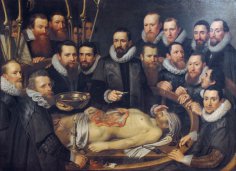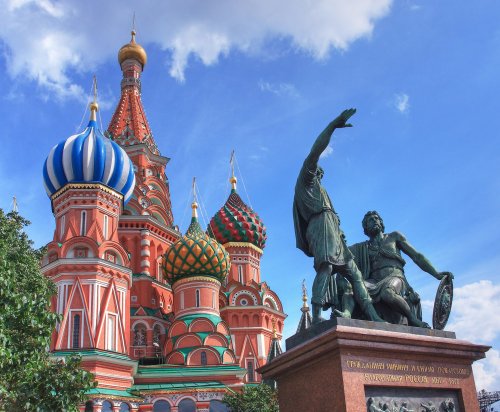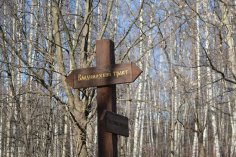
A few meters from the highway along which our modern and comfortable bus rushes, or perhaps even right beneath the asphalt, lies the old Vladimirskaya Road—the “Vladimirka.” The longest road in the world, part of the legendary Siberian Highway, a road of grief, tears, and sorrow…
The first exiles to cross it were the alarm bell of Uglich, announcing the death of Tsarevich Dmitry, and 300 shackled townspeople, witnesses to the murder. And then came the Decembrists, Radishchev, Herzen, some on foot, some in carts… According to established quotas, convicts were required to walk 500 miles per month, and it took them between one and a half and two years to reach the Nerchinsk Fortress. The saddest part was that travel time didn't count toward their overall sentence…
“Vladimirka moans, Vladimirka cries, Vladimirka suffers…” Take another look at Levitan's melancholy painting, which is called “Vladimirka”…

Vladimirskaya Road. Fragment of the Plan of the Royal City of Moscow showing locations within a thirty-verst radius, 1766.
The Decembrists' wives also traveled this terrifying route, and one of them, Nikita Muravyov's wife, carried Pushkin's poem “In the depths of Siberian mines…” copied onto a handkerchief to the exiles. And on the way back to his execution in Moscow, Yemelyan Pugachev was once transported along the Vladimir Highway in a wooden cage… I wonder if those heading to hard labor cheered the failed Russian emperor, who was being transported to a cruel death?
And now the former “Vladimirka” is a wonderful high-speed highway with amazing views from the window…
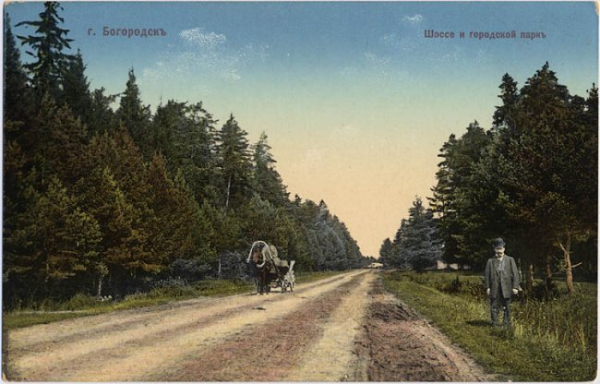
A highway passing through a park in the city of Bogorodsk
The Vladimirka has known other travelers too. Prince Vladimir Monomakh of Kiev rode along it with his retinue. Ivan the Terrible marched with his army to storm Kazan. The mortally wounded Bagration was carried along it from Borodino, Pushkin traveled to Boldino, and Tolstoy, Chekhov, and Levitan traveled along it… But the Vladimirka is still famous for its heavy jingling of chains.
The bus will take us to Vladimir in a few hours. The exiles walked for days—in all kinds of weather, in chains, hungry, some with children…
Taking a break from the convicts, Vladimir and its Golden Gates are already visible, the ancient capital of Rus' and today's capital of the “Golden Ring of Russia,” a bright and joyful city, full of monuments of grandeur and glory. Just look at the churches of the pre-Mongol period! Prince Andrei Bogolyubsky, who built these churches, dedicated them to the Mother of God… It was these churches that laid the foundations of Northeastern Rus' and, ultimately, our Russia…
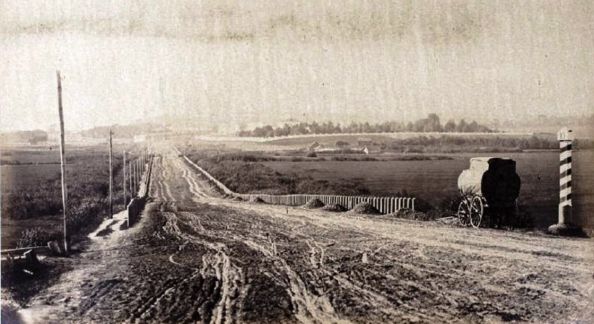
Vladimirka, 1858-1862. Photographer Ferdinand Bureau
And Suzdal awaits us—a small, toy-like, cheerful, and “movie-like” town, considered one of the most beautiful cities in Russia. The locals take great offense at this “one of…” designation; they rightfully believe that their nature reserve is the very best.
In Suzdal, where “trees rise above the rooftops, and above the trees rise the domes of churches built in a time when people knew how to communicate with God,” the soul finds rest. Wandering through Suzdal, one never ceases to be amazed—how did all these beautiful churches remain intact, how did they escape oblivion and destruction? Why weren't they dismantled brick by brick, hauled away for economic needs? Perhaps the falcon that flew off the city's coat of arms sheltered them with its wings during the turbulent years of Russian history?
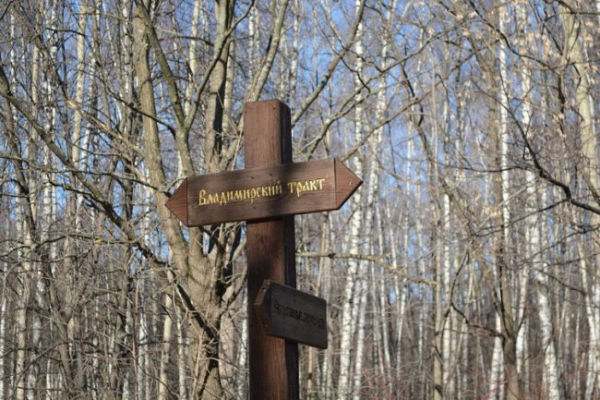
A modern view of the historic section of the Vladimirsky Tract within the city limits of Moscow.
And while you're strolling, exploring, and admiring, don't forget to try the famous local mead. It's best to try it in the “gluttony” section, with a variety of herbs, wormwood, juniper, invigorating and soothing, potent and smooth, brewed “with thick honey and spring water”…
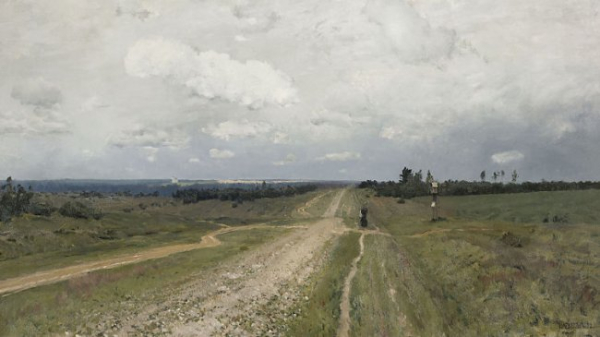
Isaac Levitan, “Vladimirka”, 1892


